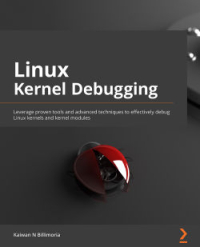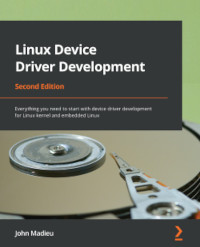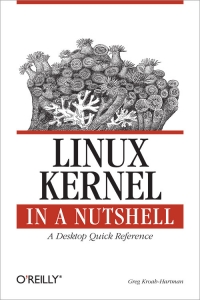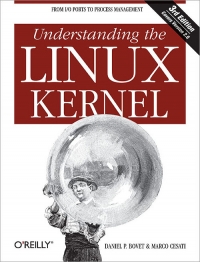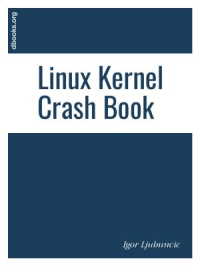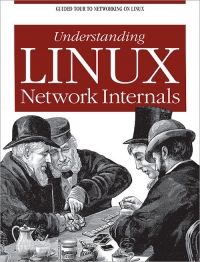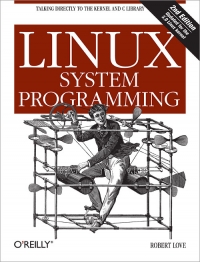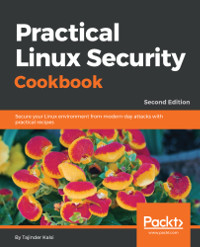Linux Kernel Development, 3rd Edition
Linux Kernel Development details the design and implementation of the Linux kernel, presenting the content in a manner that is beneficial to those writing and developing kernel code, as well as to programmers seeking to better understand the operating system and become more efficient and productive in their coding. The book details the major subsystems and features of the Linux kernel, including its design, implementation, and interfaces. It covers the Linux kernel with both a practical and theoretical eye, which should appeal to readers with a variety of interests and needs. The author, a core kernel developer, shares valuable knowledge and experience on the 2.6 Linux kernel. Specific topics covered include process management, scheduling, time management and timers, the system call interface, memory addressing, memory management, the page cache, the VFS, kernel synchronization, portability concerns, and debugging techniques. This book covers the most interesting features of the ...
Linux Kernel Development details the design and implementation of the Linux kernel, presenting the content in a manner that is beneficial to those writing and developing kernel code, as well as to programmers seeking to better understand the operating system and become more efficient and productive in their coding. The book details the major subsystems and features of the Linux kernel, including its design, implementation, and interfaces. It covers the Linux kernel with both a practical and theoretical eye, which should appeal to readers with a variety of interests and needs. The author, a core kernel developer, shares valuable knowledge and experience on the 2.6 Linux kernel. Specific topics covered include process management, scheduling, time management and timers, the system call interface, memory addressing, memory management, the page cache, the VFS, kernel synchronization, portability concerns, and debugging techniques. This book covers the most interesting features of the ...
Linux Kernel Debugging
The Linux kernel is at the very core of arguably the world's best production-quality OS. Debugging it, though, can be a complex endeavor. Linux Kernel Debugging is a comprehensive guide to learning all about advanced kernel debugging. This book covers many areas in-depth, such as instrumentation-based debugging techniques (printk and the dynamic debug framework), and shows you how to use Kprobes. Memory-related bugs tend to be a nightmare - two chapters are packed with tools and techniques devoted to debugging them. When the kernel gifts you an Oops, how exactly do you interpret it to be able to debug the underlying issue? We've got you covered. Concurrency tends to be an inherently complex topic, so a chapter on lock debugging will help you to learn precisely what data races are, including using KCSAN to detect them. Some thorny issues, both debug- and performance-wise, require detailed kernel-level tracing; you'll learn to wield the impressive power of Ftrace and its frontends. Yo ...
The Linux kernel is at the very core of arguably the world's best production-quality OS. Debugging it, though, can be a complex endeavor. Linux Kernel Debugging is a comprehensive guide to learning all about advanced kernel debugging. This book covers many areas in-depth, such as instrumentation-based debugging techniques (printk and the dynamic debug framework), and shows you how to use Kprobes. Memory-related bugs tend to be a nightmare - two chapters are packed with tools and techniques devoted to debugging them. When the kernel gifts you an Oops, how exactly do you interpret it to be able to debug the underlying issue? We've got you covered. Concurrency tends to be an inherently complex topic, so a chapter on lock debugging will help you to learn precisely what data races are, including using KCSAN to detect them. Some thorny issues, both debug- and performance-wise, require detailed kernel-level tracing; you'll learn to wield the impressive power of Ftrace and its frontends. Yo ...
Linux Device Driver Development, 2nd Edition
Linux is by far the most-used kernel on embedded systems. Thanks to its subsystems, the Linux kernel supports almost all of the application fields in the industrial world. This updated second edition of Linux Device Driver Development is a comprehensive introduction to the Linux kernel world and the different subsystems that it is made of, and will be useful for embedded developers from any discipline. You'll learn how to configure, tailor, and build the Linux kernel. Filled with real-world examples, the book covers each of the most-used subsystems in the embedded domains such as GPIO, direct memory access, interrupt management, and I2C/SPI device drivers. This book will show you how Linux abstracts each device from a hardware point of view and how a device is bound to its driver(s). You'll also see how interrupts are propagated in the system as the book covers the interrupt processing mechanisms in-depth and describes every kernel structure and API involved. This new edition also a ...
Linux is by far the most-used kernel on embedded systems. Thanks to its subsystems, the Linux kernel supports almost all of the application fields in the industrial world. This updated second edition of Linux Device Driver Development is a comprehensive introduction to the Linux kernel world and the different subsystems that it is made of, and will be useful for embedded developers from any discipline. You'll learn how to configure, tailor, and build the Linux kernel. Filled with real-world examples, the book covers each of the most-used subsystems in the embedded domains such as GPIO, direct memory access, interrupt management, and I2C/SPI device drivers. This book will show you how Linux abstracts each device from a hardware point of view and how a device is bound to its driver(s). You'll also see how interrupts are propagated in the system as the book covers the interrupt processing mechanisms in-depth and describes every kernel structure and API involved. This new edition also a ...
Linux Kernel in a Nutshell
Written by a leading developer and maintainer of the Linux kernel,Linux Kernel in a Nutshell is a comprehensiveoverview of kernel configuration and building, a critical task forLinux users and administrators. No distribution can provide a Linux kernel that meets all users'needs. Computers big and small have special requirements that requirereconfiguring and rebuilding the kernel. Whether you are trying toget sound, wireless support, and power management working on a laptopor incorporating enterprise features such as logical volume managementon a large server, you can benefit from the insights in this book. ...
Written by a leading developer and maintainer of the Linux kernel,Linux Kernel in a Nutshell is a comprehensiveoverview of kernel configuration and building, a critical task forLinux users and administrators. No distribution can provide a Linux kernel that meets all users'needs. Computers big and small have special requirements that requirereconfiguring and rebuilding the kernel. Whether you are trying toget sound, wireless support, and power management working on a laptopor incorporating enterprise features such as logical volume managementon a large server, you can benefit from the insights in this book. ...
Understanding the Linux Kernel, 3rd Edition
In order to thoroughly understand what makes Linux tick and why it works so well on a wide variety of systems, you need to delve deep into the heart of the kernel. The kernel handles all interactions between the CPU and the external world, and determines which programs will share processor time, in what order. It manages limited memory so well that hundreds of processes can share the system efficiently, and expertly organizes data transfers so that the CPU isn't kept waiting any longer than necessary for the relatively slow disks. The third edition of Understanding the Linux Kernel takes you on a guided tour of the most significant data structures, algorithms, and programming tricks used in the kernel. ...
In order to thoroughly understand what makes Linux tick and why it works so well on a wide variety of systems, you need to delve deep into the heart of the kernel. The kernel handles all interactions between the CPU and the external world, and determines which programs will share processor time, in what order. It manages limited memory so well that hundreds of processes can share the system efficiently, and expertly organizes data transfers so that the CPU isn't kept waiting any longer than necessary for the relatively slow disks. The third edition of Understanding the Linux Kernel takes you on a guided tour of the most significant data structures, algorithms, and programming tricks used in the kernel. ...
Linux Kernel Crash Book
Linux crash analysis - this is a subject that has lots of unanswered mail threads and plain text documents scattered all over the place, inaccessible to almost everyone, save the tiny percentage of super geeks. My personal and professional interest in the last three years has taken me down the path of Linux kernel secrets, all the way into assembly code, where magic happens. I felt the desire to learn what happens in the heart of the system. Like most technical topics, there was some information to be found online, but it was cryptic, ambiguous, partial, nerdy, or just not there at all. ...
Linux crash analysis - this is a subject that has lots of unanswered mail threads and plain text documents scattered all over the place, inaccessible to almost everyone, save the tiny percentage of super geeks. My personal and professional interest in the last three years has taken me down the path of Linux kernel secrets, all the way into assembly code, where magic happens. I felt the desire to learn what happens in the heart of the system. Like most technical topics, there was some information to be found online, but it was cryptic, ambiguous, partial, nerdy, or just not there at all. ...
Understanding Linux Network Internals
If you've ever wondered how Linux carries out the complicated tasks assigned to it by the IP protocols - or if you just want to learn about modern networking through real-life examples - Understanding Linux Network Internals is for you. This book clearly explains the underlying concepts and teaches you how to follow the actual C code that implements it. Although some background in the TCP/IP protocols is helpful, you can learn a great deal from this text about the protocols themselves and their uses. And if you already have a base knowledge of C, you can use the book's code walkthroughs to figure out exactly what this sophisticated part of the Linux kernel is doing. ...
If you've ever wondered how Linux carries out the complicated tasks assigned to it by the IP protocols - or if you just want to learn about modern networking through real-life examples - Understanding Linux Network Internals is for you. This book clearly explains the underlying concepts and teaches you how to follow the actual C code that implements it. Although some background in the TCP/IP protocols is helpful, you can learn a great deal from this text about the protocols themselves and their uses. And if you already have a base knowledge of C, you can use the book's code walkthroughs to figure out exactly what this sophisticated part of the Linux kernel is doing. ...
Linux System Programming, 2nd Edition
Write software that draws directly on services offered by the Linux kernel and core system libraries. With this comprehensive book, Linux kernel contributor Robert Love provides you with a tutorial on Linux system programming, a reference manual on Linux system calls, and an insider's guide to writing smarter, faster code. Love clearly distinguishes between POSIX standard functions and special services offered only by Linux. With a new chapter on multithreading, this updated and expanded edition provides an in-depth look at Linux from both a theoretical and applied perspective over a wide range of programming topics. ...
Write software that draws directly on services offered by the Linux kernel and core system libraries. With this comprehensive book, Linux kernel contributor Robert Love provides you with a tutorial on Linux system programming, a reference manual on Linux system calls, and an insider's guide to writing smarter, faster code. Love clearly distinguishes between POSIX standard functions and special services offered only by Linux. With a new chapter on multithreading, this updated and expanded edition provides an in-depth look at Linux from both a theoretical and applied perspective over a wide range of programming topics. ...
Mastering Embedded Linux Programming
Mastering Embedded Linux Programming takes you through the product cycle and gives you an in-depth description of the components and options that are available at each stage. You will begin by learning about toolchains, bootloaders, the Linux kernel, and how to configure a root filesystem to create a basic working device. You will then learn how to use the two most commonly used build systems, Buildroot and Yocto, to speed up and simplify the development process. Building on this solid base, the next section considers how to make best use of raw NAND/NOR flash memory and managed flash eMMC chips, including mechanisms for increasing the lifetime of the devices and to perform reliable in-field updates. Next, you need to consider what techniques are best suited to writing applications for your device. We will then see how functions are split between processes and the usage of POSIX threads, which have a big impact on the responsiveness and performance of the final device The closing secti ...
Mastering Embedded Linux Programming takes you through the product cycle and gives you an in-depth description of the components and options that are available at each stage. You will begin by learning about toolchains, bootloaders, the Linux kernel, and how to configure a root filesystem to create a basic working device. You will then learn how to use the two most commonly used build systems, Buildroot and Yocto, to speed up and simplify the development process. Building on this solid base, the next section considers how to make best use of raw NAND/NOR flash memory and managed flash eMMC chips, including mechanisms for increasing the lifetime of the devices and to perform reliable in-field updates. Next, you need to consider what techniques are best suited to writing applications for your device. We will then see how functions are split between processes and the usage of POSIX threads, which have a big impact on the responsiveness and performance of the final device The closing secti ...
Practical Linux Security Cookbook, 2nd Edition
Over the last few years, system security has gained a lot of momentum and software professionals are focusing heavily on it. Linux is often treated as a highly secure operating system. However, the reality is that Linux has its share of security aws, and these security aws allow attackers to get into your system and modify or even destroy your important data. But there's no need to panic, since there are various mechanisms by which these aws can be removed, and this book will help you learn about different types of Linux security to create a more secure Linux system. With a step-by-step recipe approach, the book starts by introducing you to various threats to Linux systems. Then, this book will walk you through customizing the Linux kernel and securing local files. Next, you will move on to managing user authentication both locally and remotely and mitigating network attacks. Later, you will learn about application security and kernel vulnerabilities. You will also learn about patch ...
Over the last few years, system security has gained a lot of momentum and software professionals are focusing heavily on it. Linux is often treated as a highly secure operating system. However, the reality is that Linux has its share of security aws, and these security aws allow attackers to get into your system and modify or even destroy your important data. But there's no need to panic, since there are various mechanisms by which these aws can be removed, and this book will help you learn about different types of Linux security to create a more secure Linux system. With a step-by-step recipe approach, the book starts by introducing you to various threats to Linux systems. Then, this book will walk you through customizing the Linux kernel and securing local files. Next, you will move on to managing user authentication both locally and remotely and mitigating network attacks. Later, you will learn about application security and kernel vulnerabilities. You will also learn about patch ...

